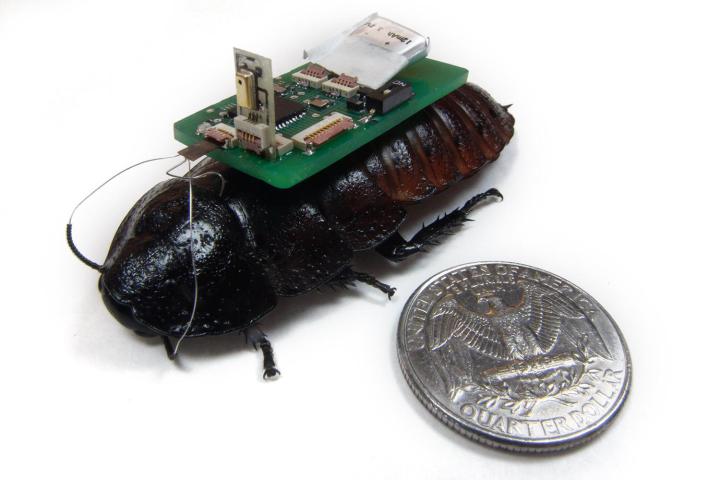
From the brilliant mind of Alper Bozkurt and his colleagues at NCSU, these enhanced critters will essentially comb through disaster areas, equipped with electronic bridles capable of picking up sounds. Each electrode stimulates a cockroach’s antennae and gives them directions on how to navigate through a particular area. For instance, if the electrode signals an object to the left of one of these robo-roaches, then it heads right instead of running into the blockade. Because of a cockroach’s impeccable ability to traverse a less than ideal landscape, the team knew they’d be perfect for the project.
Each cockroach also carries a sensor backpack which allows the team to control them in two unique ways. First, a drone beams a series of invisible parameters — called radio fences — which confine the roaches to search a particular area without venturing off. One of the scientists equates the drone’s radio fence to being a “leader that can guide the swarm to explore a large environment.”
The team also uses the sensor backpacks to create one network which tethers each cockroach to each other. Once one of the cyborg roaches picks up valuable information during a search, it sends the info to the roach closest to the drone which then transmits it to the team. Each backpack also continuously monitors the signal strength of the insects, assuring none loses contact with the rest of the group.
During a search, most cockroaches make use of a low-resolution microphone attached to its backpack to help detect any nearby sounds. If one picks up a sound, it signals for other members of the pack — including those outfitted with a high-resolution microphone — to head in its direction to pinpoint an exact location. After honing in on a potential sound (i.e. survivors), the sensor transmits the data to the drone and alerts the team.
For now, Bozkurt and his team only developed these sensors for detecting sound in rubble but noted various types of sensors could be added to the cockroaches in the future. From infrared sensors capable of detecting warm bodies to propane sensors and Geiger counters, Bozkurt intends to make these insects versatile for a bevy of situations. Though this unique technology has only been tested in a series of simulations — the team plans to do real-life tests by the end of the summer — a world in which cyborg cockroaches play the role of hero doesn’t seem that far off.
Editors' Recommendations
- Third Eye device could help phone addicts avoid walking disasters
- This artificial heart could help keep people on transplant waiting lists alive
- New method for detecting exoplanet atmospheres could help find habitable planets
- This simple seat clip could help save the lives of kids left in sweltering cars
- Team Rubicon revolutionizes disaster response. Microsoft wants to help


